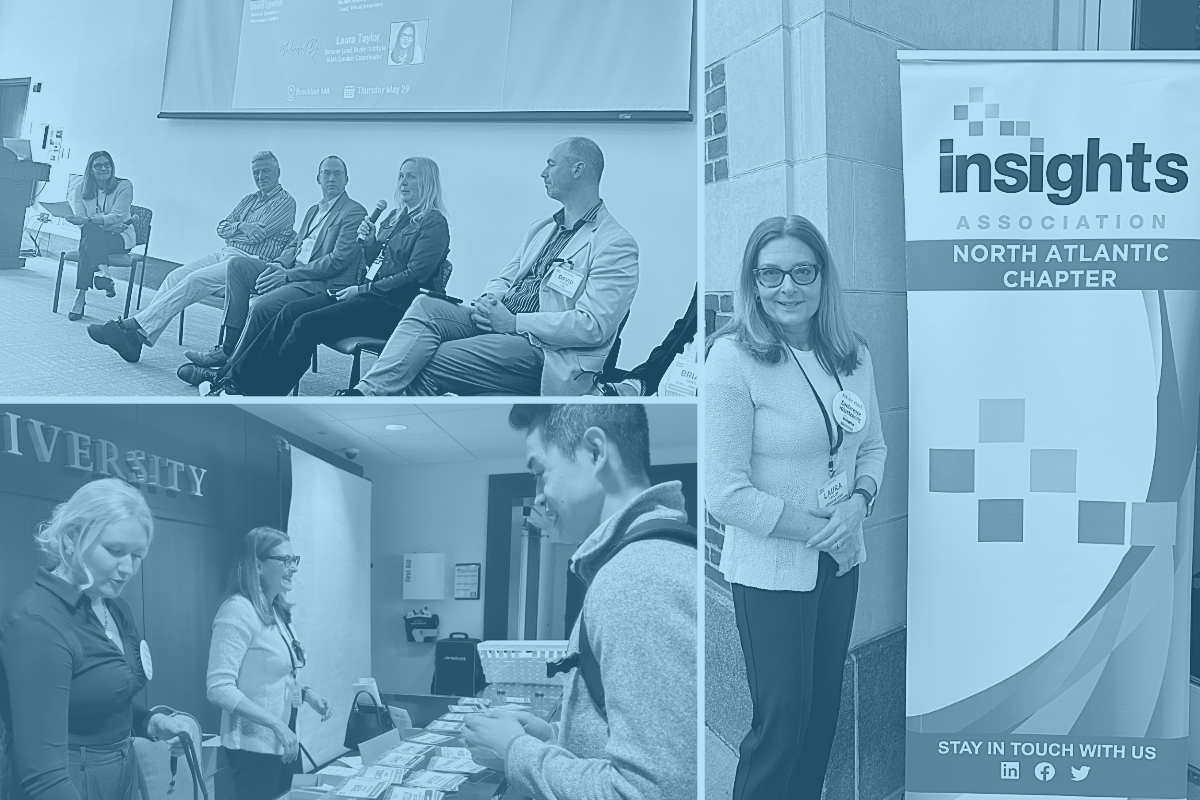
From Information to Illumination
TACKLING THE LAST MILE PROBLEM: HOW INSIGHTS SESSIONS MOVE TEAMS FROM INSIGHTS TO ACTION.
by Maggie Ledbetter
You’ve been there before. Eyes glazed over or perhaps wandering toward the clock in the corner. The rhythmic “tick, tick” somehow drowning out the presenter as they click through chart after chart after PowerPoint chart.
“Awareness… flat. Consideration… flat. Advertising recall… this might surprise some of you in the room…” Your gaze lifts in anticipation. “Flat.” The room lets out a collective sigh.
The goal of any research project is to inspire action, but what happens when insights fall flat?
Harvard Business Review editor Scott Berinato recently wrote about what he calls “the last mile problem.” That is, the communication gap that occurs in the final stages of an analytical journey, where we go from data to insight to action. Or so we hope.
In describing the last mile problem, Berinato quotes Willard C. Brinton, a pioneer in data communication, who – even in 1914 – observed the challenge of data communication: “Time after time it happens that some member of a committee or a board of directors will upset the carefully thought-out plan of a man who knows the facts, simply because the man with the facts cannot present his facts readily enough to overcome the opposition.”
Brinton writes in another passage, a favorite of mine: “Though accurate data and real facts are valuable, when it comes to getting results, the manner of presentation is ordinarily more important than the facts themselves.”
In between analysis and synthesis is an important moment to pause.
We are in no short supply of facts. According to a recent report, it’s estimated that by 2020 “1.7MB of data will be created every second for every person on earth.” That’s the equivalent of every person on Earth creating and saving a roughly 50-page PowerPoint deck with some sort of graphic on nearly every page, every second.
And this says nothing of the increasingly large amounts of customer data companies have access to via loyalty programs, electronic records, and survey research.
The challenge, however, is turning data into a compelling narrative that drives action.
And, as we have worked as researchers to highlight in recent years, we understand and relate best to stories.
But, good stories don’t simply appear, nor are they created in a vacuum. We need a process to move from data to insight.
There are many talents that contribute to good data communication. There are those who can dive into the weeds of data and find a meaningful pattern, those who can take a pattern and build a compelling narrative, and those who can take a narrative and create powerful visualization.
Herein lies the heart of the insights session.
In between analysis and synthesis is an important moment to pause. Here, we bring a team together for an insights session. Importantly, that team includes those who can dive into the weeds and those who can build a narrative. This moment is where we go from what the data are saying to what it means. We look at all the patterns and build a narrative that connects to where we want the audience to go. As my colleague, Joelle, described in a recent post on The Collaborative Journey to Insight, “[insights session are] an opportunity to take participants through the detail and allow the collaborative spirit of the group to draw out the details that matter most.”
Starting with a set framework to guide this journey “through the detail” is key. A favorite of mine, and Joelle’s as she notes, is the GROW framework: Goals, Realities, Opportunities, Way Forward. The G of GROW reminds us why we’re trying to move, the R-O defines what we need to move, and the W defines how we’ll move.
- Starting with the GOALS grounds the team in the strategic vision and keeps the decisions the research seeks to inform at the center of the conversation.
- Then, the team dives into the REALITIES, both learned from the research and known from other sources of truth. Start broad, capturing all the facts, then narrow to the facts that impact what can or should be done. These are your realities.
- Now, grounded in goals and realities, we can begin to define the OPPORTUNITIES. Put more simply, what could we do to achieve our goals? Again, start broad, capturing all the options.
- The WAY FORWARD is how the team aligns to move forward knowing the goals, realities and assessment of opportunities along the way. This jointly-defined path creates a call to action that readers can understand, relate to, and carry forward beyond a presentation. .
Let’s try putting this framework into practice by summarizing this article:


Analyst by trade, storyteller at heart. Maggie leverages experience in Burke’s Decision Sciences group and a passion for communication that sticks to create narratives that persuade, inspire, and propel her clients’ businesses forward.
As always, you can follow Burke, Inc. on our LinkedIn, Twitter, Facebook and Instagram pages.
Sources: Feature image (©gstockstudio – stock.adobe.com)








